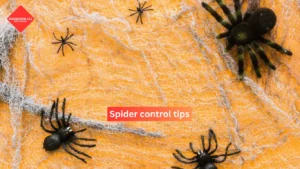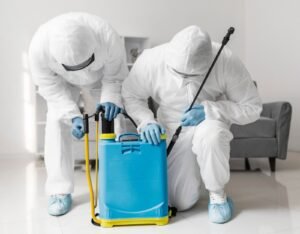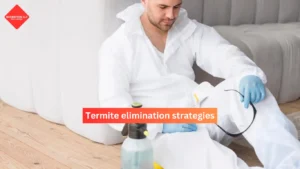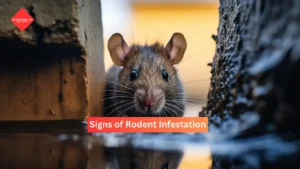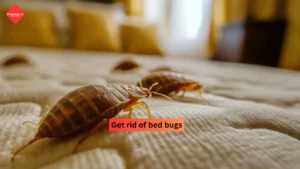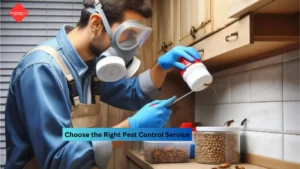
When it comes to dealing with pest problems, choosing the right pest control method is crucial for effective and lasting results. With a variety of techniques available, from chemical treatments to non-toxic options, it can be challenging to determine which method is best suited to your specific needs. This blog will provide a comprehensive overview of different pest control methods, helping you make an informed decision on the best approach to tackle your pest problems.
Chemical Pest Control: Chemical pest control is one of the most common and widely used methods for managing pests. It involves the application of pesticides to eliminate unwanted insects and rodents. There are various types of chemical treatments, including sprays, baits, and foggers. Pesticides work by targeting the nervous system or digestive system of pests, ultimately leading to their death.
Advantages:
- Effectiveness: Chemical treatments are often highly effective at quickly eliminating pests.
- Wide Range of Options: There are many different types of pesticides available, allowing for targeted treatment based on the type of pest.
- Quick Results: Chemical methods can provide fast results, reducing the number of pests in a short period.
Disadvantages:
- Potential Health Risks: Chemicals can pose health risks to humans and pets if not used correctly.
- Environmental Impact: Some pesticides can have negative effects on the environment, including harming beneficial insects and contaminating water sources.
- Resistance Issues: Pests can develop resistance to certain chemicals over time, reducing their effectiveness.
Heat Treatment: Heat treatment is a non-chemical method that involves raising the temperature of an infested area to levels that are lethal to pests. This method is commonly used for bed bug infestations, as bed bugs and their eggs cannot survive high temperatures. The treatment involves heating the affected area to around 120-140 degrees Fahrenheit for several hours.
Advantages:
- Eco-Friendly: Heat treatment does not involve the use of chemicals, making it a more environmentally friendly option.
- Effective on All Life Stages: Heat can kill pests at all life stages, including eggs, nymphs, and adults.
- No Residue: Unlike chemical treatments, heat treatment leaves no harmful residues behind.
Disadvantages:
- Cost: Heat treatment can be more expensive than other methods due to the equipment and energy required.
- Limited Coverage: It may not be suitable for all types of infestations, particularly those that are not confined to a single area.
- Potential Damage: High temperatures can potentially damage certain items and materials in the treated area.
Integrated Pest Management (IPM): Integrated Pest Management (IPM) is a holistic approach that combines multiple pest control methods to manage pests effectively and sustainably. IPM focuses on long-term prevention and uses a combination of biological, cultural, physical, and chemical methods to control pests.
Advantages:
- Comprehensive Approach: IPM addresses pest problems from multiple angles, leading to more effective and sustainable results.
- Reduced Chemical Use: IPM relies on a combination of methods, which can reduce the reliance on chemical treatments.
- Prevention Focus: IPM emphasizes prevention and control strategies to minimize the risk of future infestations.
Disadvantages:
- Complexity: Implementing an IPM program can be more complex and may require a thorough understanding of pest biology and behavior.
- Time-Consuming: Developing and executing an IPM plan can take more time compared to using a single pest control method.
- Requires Expertise: IPM may require the involvement of pest control professionals with specialized knowledge and skills.
Biological Pest Control: Biological pest control involves the use of natural predators, parasites, or pathogens to control pest populations. This method leverages the natural enemies of pests to reduce their numbers and prevent infestations.
Advantages:
- Eco-Friendly: Biological control methods are environmentally friendly and can help maintain ecological balance.
- Targeted Approach: Natural predators are often specific to certain pests, minimizing the impact on non-target species.
- Sustainable: Biological control can provide long-term pest management solutions with minimal ongoing intervention.
Disadvantages:
- Limited Effectiveness: Biological control may not be effective for all types of pests or in all environments.
- Slow Results: It can take time for natural predators to establish and reduce pest populations.
- Dependence on Environmental Conditions: The success of biological control methods can be influenced by environmental factors, such as temperature and habitat.
Choosing the Right Method: Selecting the most appropriate pest control method depends on various factors, including the type of pest, the severity of the infestation, and any potential risks to humans and pets. It’s important to consider the advantages and disadvantages of each method and consult with a pest control professional to determine the best approach for your specific situation.
Conclusion: Understanding the different pest control methods available can help you make an informed decision on how to address your pest problems effectively. Whether you opt for chemical treatments, heat methods, integrated pest management, or biological control, each approach has its own set of benefits and limitations. By carefully evaluating your needs and seeking professional advice, you can choose the most suitable method to achieve a pest-free environment and ensure long-term success in managing pests.

